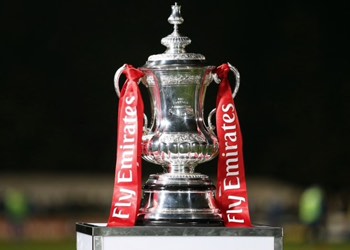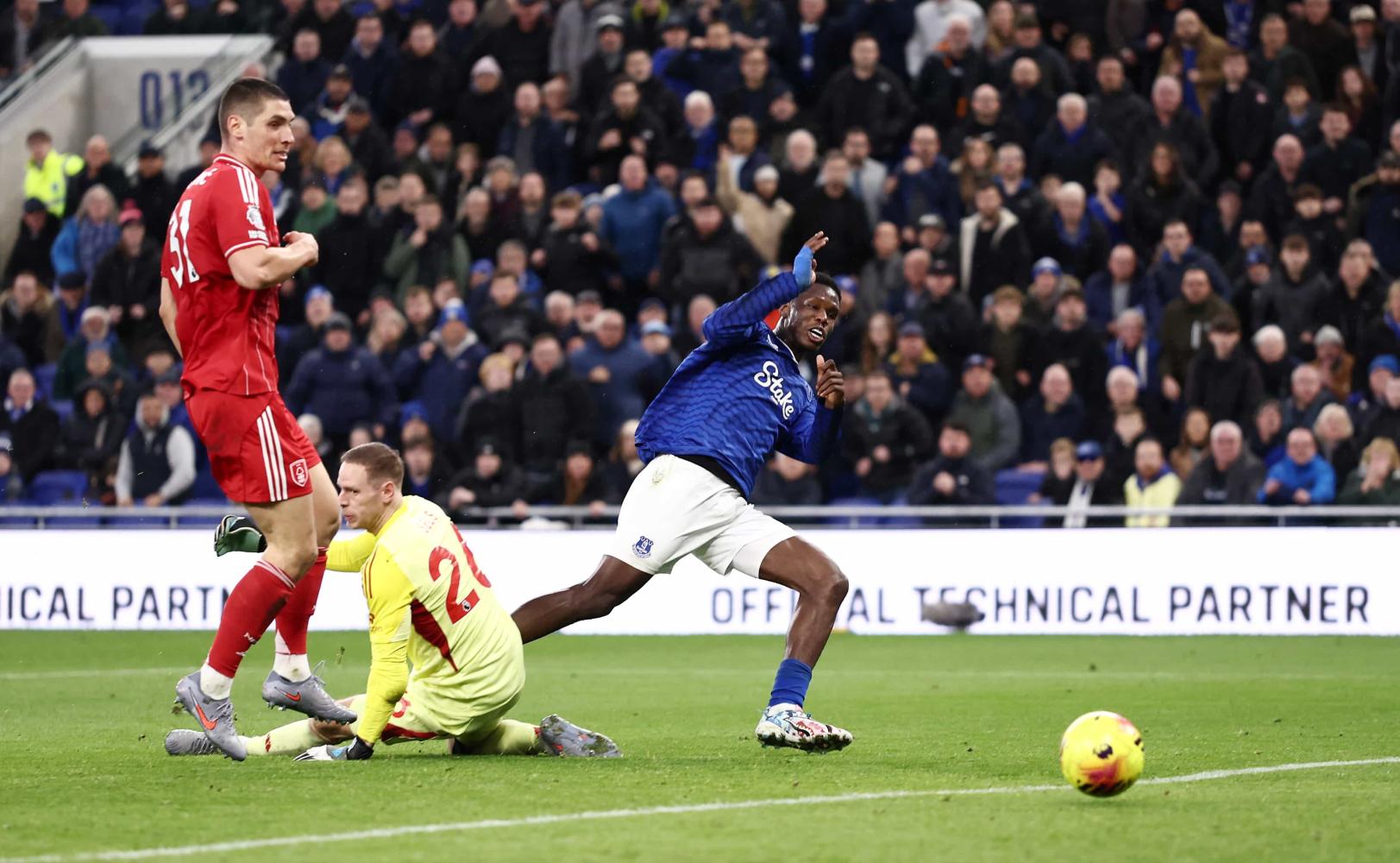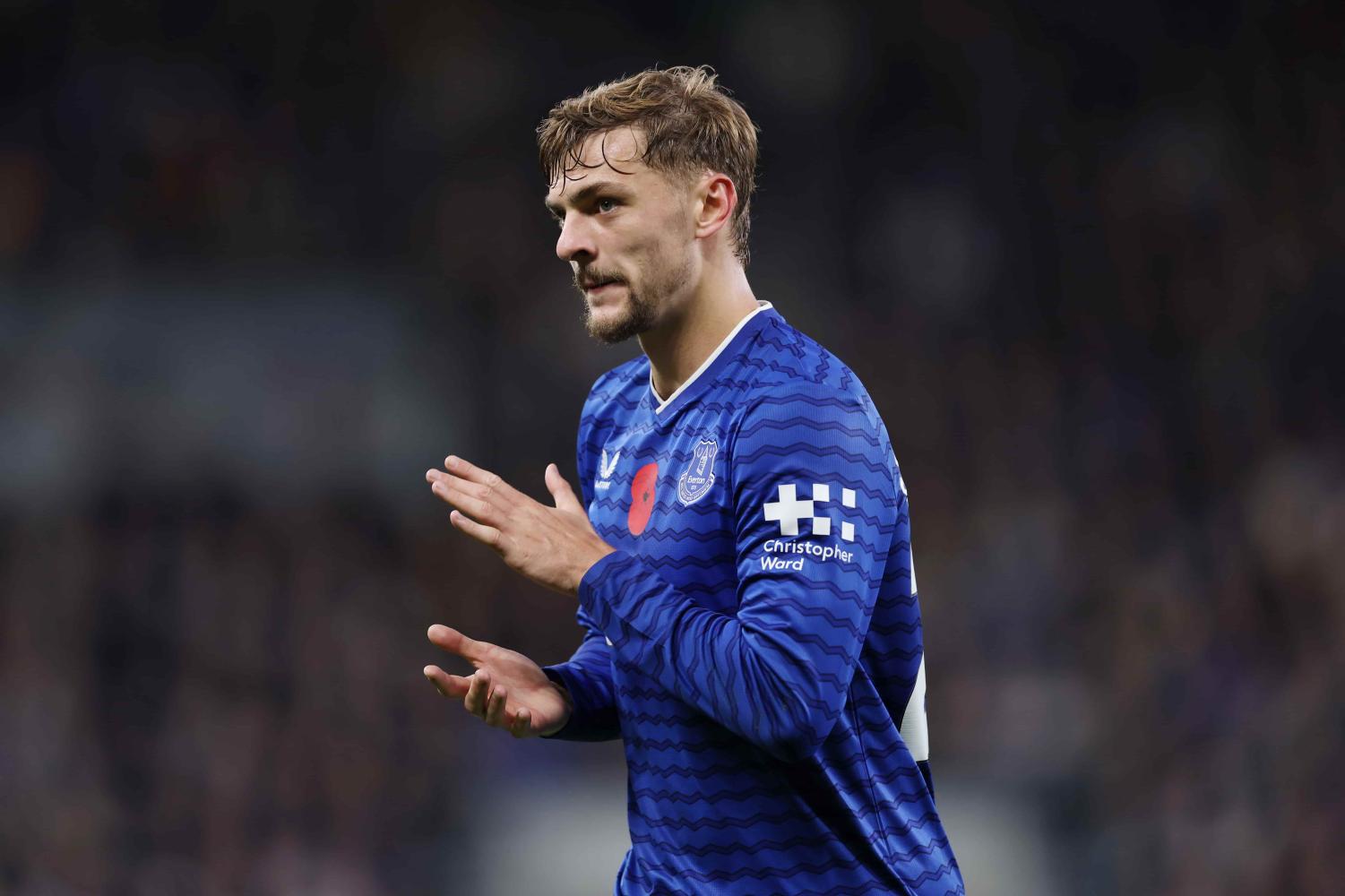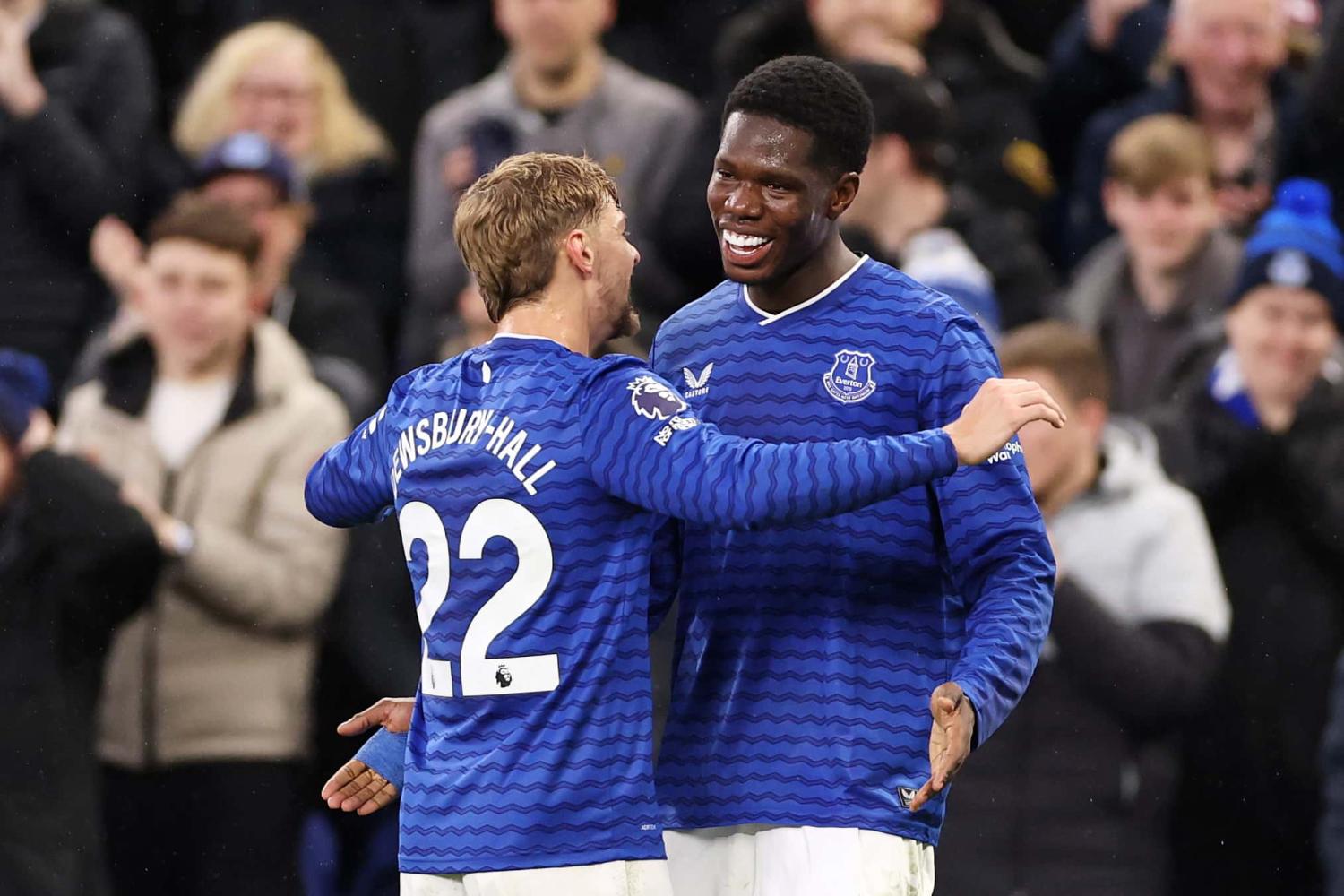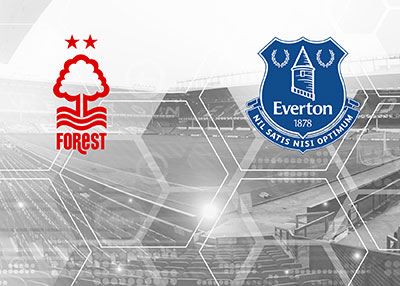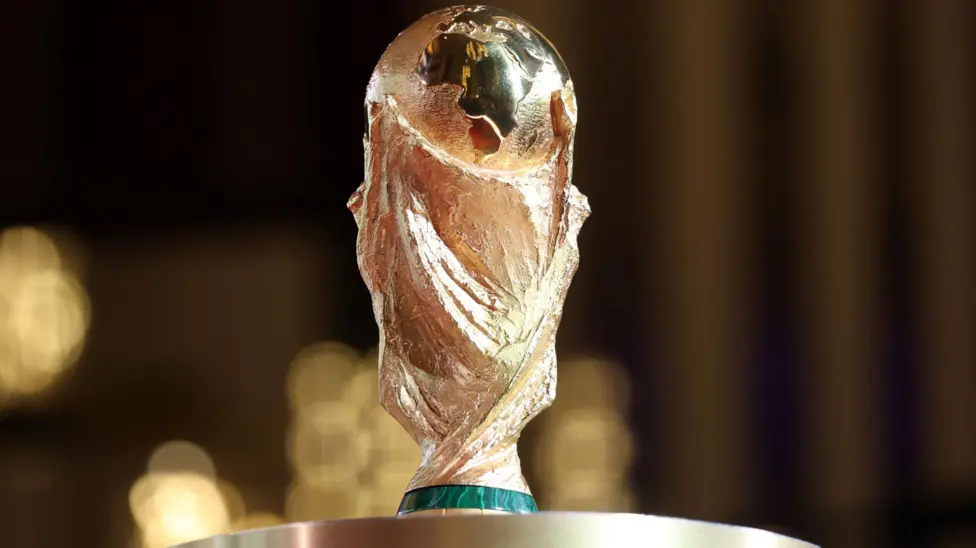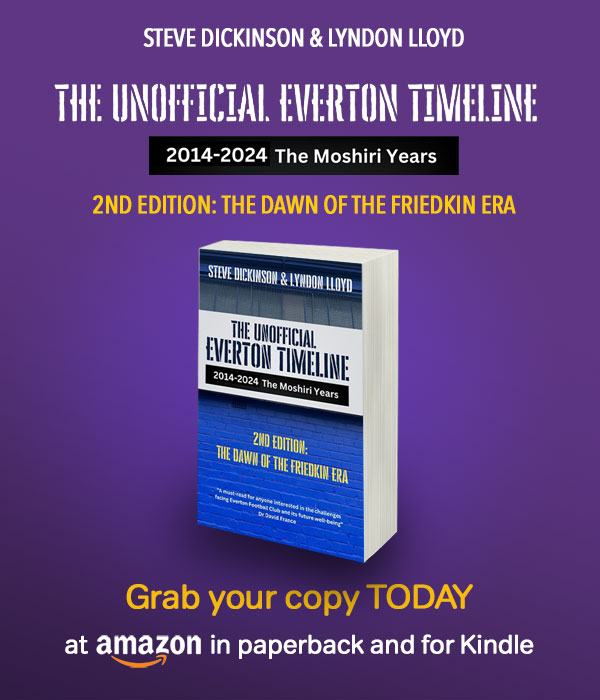EVERTON PAST PLAYER PROFILES
James McFadden
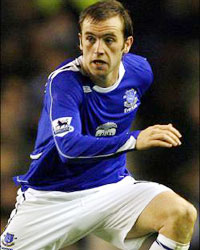
| First Spell: 2003-2007 | |
| Squad number | 11 |
| Position | Striker |
| Joined | 31 August 2003 |
| Joined from | Motherwell |
| Signed by | David Moyes |
| Transfer fee | £1.25M |
| Debut as sub | v Middlesbro (A) 21 September 2003 |
| Full debut | v Stockport
Co (H) 24 September 2003 |
| Contract duration | 2 + 3 years |
| Finalé | v Manchester C (H) 12 January 2008 |
| Left Everton | for Birmingham City 18 January 2008 |
| Transfer fee | £4.75M [+£1M] |
| Second Spell: 2011-2012 | |
| Squad number | 14 |
| Position | Midfield |
| Re-joined on | 17 October 2011 |
| Re-joined from | [Birmingham City] |
| Transfer fee | No Fee |
| Signed by | David Moyes |
| Second debut (sub) | v Newcastle (A) 5 November 2011 |
| Second debut (full) |
v Tamworth (H) 5 January 2012 |
| Contract duration | 1 year |
| Finalé | v Wolves (A) 6 May 2012 |
| Left Everton | 18 May 2012 (Released) |
| Born | Glasgow, Scotland |
| Date of birth | 14 April 1983 |
| Height | 5' 10" |
| Nickname(s) | Faddy, Jimmy Mac, Cul-de-sac Kid |
| Honours | Scotland international |
| STRENGTHS |
| Can score stunning goals |
| Close ball control |
| WEAKNESSES |
| Flatters to deceive |
| Out of action for over a year... |
First Spell — 2003-2007
David Moyes had long had his eye on James McFadden when he was banging the goals in for Motherwell, but it took the sheer
panic of a closing transfer window to finalize a deal, with just minutes
to go, bringing to a satisfactory conclusion the frantic efforts to sign
four players in one day at the end of a crazy summer of boundless rumour
and speculation.
The Glasgow-born player had worked his way up through the ranks at Fir
Park and was not only a regular in the Motherwell first team but had
forced his way into Berti Vogts international Scotland squad at the age of
just 20.
James made his debut for Motherwell as a substitute in a 3-0 defeat at
home to Boxing Day to Dundee in 2000 but did enough to suggest to the
watching Dossers that he was a player to keep an eye on.
A few more outings before the end of the season eased him into the top
team but it was about a year after his debut that he made everyone aware
of his credentials. A winning goal against Aberdeen followed up with
a strike against Livingston the following Saturday signalled that James
was in the first team to stay.
Such was the impact he made that by the end of the campaign he had
netted 10 times in 25 games and was called into the Scotland squad that
toured Asia before the World Cup Finals in Japan & South Korea.
Headers, free-kicks, mazy runs, tap-in’s his goals were wide and
varied. One such goal-of-the-season contender saw him leave 3 Dundee
defenders for dead before curling a sweet drive into the top corner of the
net in a memorable 4-2 win over Dundee.
He made his Scotland debut in the Far East but he missed the plane home
after a night, er, "sleeping in" after appearing as a substitute
against South Africa.
Faddy’s stock continued to rise spectacularly. He netted 19
league and cup goals in his first full season in the Motherwell first
team, scoring against both halves of the Old Firm, at Hampden in the
Scottish Cup Semi Final, and generally terrorizing defences throughout
Scotland. With 23 strikes in 50 league starts in a team at the lower
end of the table, his record in front of goal was excellent.
Three more international caps followed and, but for injury, Faddy would
also have lined up against Germany at Hampden in June. More
international recognition, and that first goal for Scotland, weren't
too far away.
Moyes claims that he had bought McFadden "for the future",
and that the lad would have to prove himself worthy of a first-team place
that he will have to earn the hard way. But Moyes began using
McFadden regularly fairly soon after acquiring him, albeit in an unfamiliar and uncomfortable role for the
striker – out on the right wing.
On his full debut against Stockport in the FA Cup, he showed two quick feet, great balance and that he was, quick off the
mark, always looking to find space for himself and constantly looking for the
ball into his feet, rarely giving the ball away.
And in his first full Premiership start in the rout of Leeds United he
was amazing at times as he'd be enveloped by 3 or 4 Leeds players and
you'd think there's no way he's coming out of there with the ball, and
then he'd emerge with it glued to his foot. For £1¼ million, Everton
had the bargain of the decade... or so they thought.
His next appearance at Spurs was a sign of the inconsistency to come and showed the danger of flair players: on
their day, they set the world alight but when it ain't their day they
become a liability. Stockport and Leeds may have proven too gentle an introduction
to the Premiership for the young Scot. At Spurs, everything he did
went awry. He needed to realise he can't walk the ball into the net
every time and that there is value in keeping it simple at times.
At the end of his first season at Goodison it seemed as though the jump up from Scottish League had been bigger than both he and the expectant Goodison faithful thought it would be. Many fans put his mixed start to life in the Premiership down to his being played out of position and many clamoured for him to be given a go up front.
When Moyes
eventually did play him in his proper role – just once, against Spurs
– in the spring of 2004, that feeling appeared vindicated. McFadden excelled in a rare dominating win for Everton but, annoyingly, he was thrust back on the wing in his next outing.
The start of the 2004-05 season was just as difficult, as the young
Scot lacked confidence and failed to shine in the increasingly
rare outings he was given by David Moyes.
His confidence appeared to have taken a beating and although he was getting into
good positions, making decent runs and passing defenders, he tended to fail at the
last moment because of indecision or just making the wrong decision.
Talk surrounding a potential return north of the Border has dogged McFadden ever since but there were a few signs in the second half of the 2005-06 season where it looked as though he was finding his feet a little more.
A magnificent headed goal against Chelsea in the FA Cup and a delicious 35-yard stunner against Fulham in the Premiership were two of five goals he notched that campaign.
2006-07 was anticipated to be an important one for James in terms of his Goodison future and McFadden was expected to be employed on the flanks as a result of the Johnson-Beattie partnership. But McFadden once again struggled to get a regular place, and ended up breaking a bone in his foot, again putting the brakes on any momentum he might have been building.
When he came back, he scored a quite mesmerising goal in injury time to beat Chartlon Athletic, a strike that ended up being voted goal of the season by Sky Sports viewers, a piece of instinctive skill that encapsulated his raw talent. Inconsistency, however, would plague him well into the following season while, perplexingly, he continued his star turns for Scotland.
One moment in particular, a 30-yard stunner that won a Euro 2008 qualifier against France on their turf earned him hero status north of the Border and was immortalised as a mural-size photograph at Hampden Park.
That paradox, combined with the Blues' relatively small squad, commitments in three competitions, and the fact that McFadden was approaching his peak years, left Everton with a dilemma when the January 2008 transfer window rolled around. CEO Keith Wyness insisted the club weren't interested in selling but the assumption was that, if the right offer came along, the Scot would be allowed to leave.
And that proved to be the case, with Alex McLeish desperate to get his Scotland protégé down to St Andrews, although Birmingham City took some convincing before they upped their initially derisory offer of £2M to the £5M that was ultimately accepted for a player once dubbed the Scottish Rooney.
McFadden himself would have doubts about the wisdom of the move years later:
"I was getting frustrated at not playing. I was doing well for Scotland but when I came back, the manager [Moyes], in his typical fashion, would have something to say to me about even my performances for Scotland!
"If I had come back and done well, he'd tell me what I didn't do so well. At that point, I didn't really get it, I didn't understand why he had to be so hard on me.
"In hindsight, I should have held on and stayed a bit longer. I was starting to mature and learn the game the way the manager wanted me to play it. It was just a bit of frustration that I wasn't playing regularly.
"I just had to move, it was quite hard training every day and doing well, and coming to the weekend and not playing – or playing 10 or 20 minutes, with the manger telling me I had to build trust again."I felt at that time, it was time to move on. In hindsight, I should have stayed, stuck it out – because I feel like I was starting to get into a way of playing the manager wanted me to play."
Second Spell — 2011-2012
By the time the 2011 summer transfer window slammed shut, two years had elapsed since Everton had spent money on a first-team acquisition and, following the departure of Steven Pienaar the preceding January, Mikel Arteta, Yakubu and Jermaine Beckford were all sold on transfer deadline day to ease the Club's burgeoning cash crisis.
That left Moyes short on experience in his small squad, particularly in forward areas after Victor Anichebe was ruled out with a long-term injury at the start of the campaign.
By mid-October, with an average of just one goal per game scored by the team, and on the back of three poor back-to-back defeats to three of the Premier Leagues moneybags big spenders as Everton slid rapidly from the top half toward the relegation zone, Moyes opted to bolster his numbers with the acquisition of free-agent McFadden who had left Birmingham City earlier in the year.
The Scot was still on the long path to recovery from an anterior cruciate ligament injury damage to his knee and hadn't played in over a year – since September 2010 – so he had continued to train with Birmingham over the summer in order to regain fitness.
It was a move that, while perhaps understandable under Everton's parlous financial circumstances, was not exactly welcomed unanimously by increasingly weary Evertonians — if there was anything that signaled how far the club had fallen on hard times, nothing could underline it more than bringing back an unfit ex-player who had failed to set the world alight in his first spell with the club.
Though Moyes insisted that McFadden was weeks away from being available to play for the first team, the forward made his second debut for the Blues as a late substitute in a 2-1 defeat at Newcastle United in November 2011. But hamstring problems held him back.
By January, he was considered fit enough to start a game, against Tamworth in the FA Cup, but then he felt pain in his groin. 77 minutes of football in four months underline what a gamble this had been.
Sporadic appearances followed for the remainder of the season but the Scot never looked like he would recapture his best form and he was eventually released in May 2012.
| Everton Career — First Spell | |||||||
| Season | Squad Number |
League Apps (sub) |
League Goals |
Cup Apps (sub) |
Cup Goals |
Total Apps (sub) |
Total Goals |
| 2003-04 | 24 |
11 (12) |
0 |
4 (0) |
0 |
15 (12) |
0 |
| 2004-05 | 11 |
7 (16) |
1 |
6 (0) |
2 |
13 (16) |
3 |
| 2005-06 | 11 |
24 (8) |
6 |
5 (4) |
1 |
29 (12) |
7 |
| 2006-07 | 11 |
6 (13) |
2 |
2 (0) |
1 |
8 (13) |
3 |
| 2007-08 | 11 |
5 (7) |
2 |
9 (0) |
3 |
8 (13) |
5 |
| Totals | 53 (56) |
11 |
26 (4) |
7 |
79 (60) |
18 |
|
| Everton Career — Second Spell | |||||||
| Season |
Squad Number |
League Apps (sub) |
League Goals |
Cup Apps (sub) |
Cup Goals |
Total Apps (sub) |
Total Goals |
| 2011-12 | 14 | 2 (5) | 0 | 1 (0) | 0 | 3 (5) | 0 |
Totals |
2 (5) | 0 | 1 (0) | 0 | 3 (5) | 0 | |
| Previous Career | |||
| Season | Team | Appearances (sub) | Goals |
| 2000-2003 | Motherwell | 52 (11) & 6 (1) | 26 & 6 |
| 2008-2011 | Birmingham City | 67 (15) & 5 (1) | 13 & 1 |

